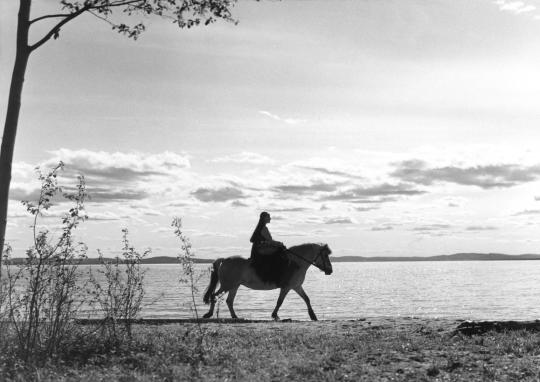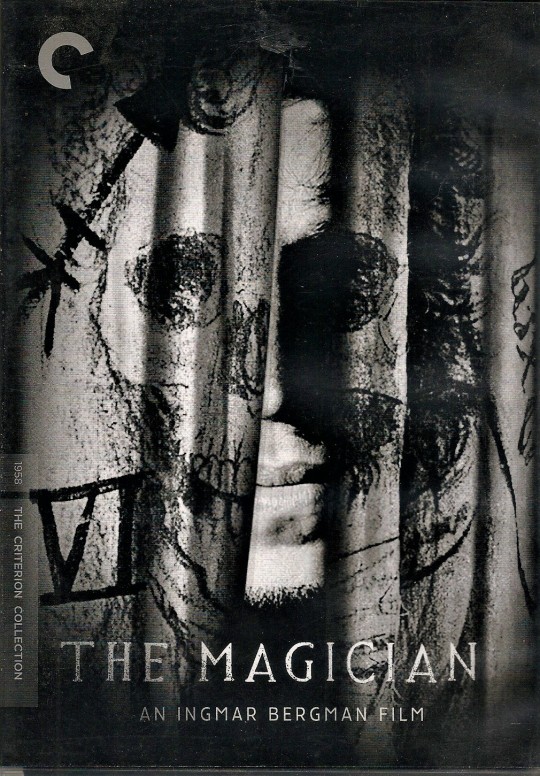#Oscar Ljung
Explore tagged Tumblr posts
Text
























ansiktet, ingmar bergman 1958
#ansiktet#ingmar bergman#1958#max von sydow#ingrid thulin#gunnar björnstrand#naima wifstrand#bengt ekerot#bibi andersson#birgitta pettersson#gertrud fridh#lars ekborg#erland josephson#Åke fridell#sif ruud#oscar ljung#ulla sjöblom#axel düberg#black magic#gaslight#centennial summer#zirkus renz#ansichten eines clowns#jeder für sich und gott gegen alle#sleepy hollow#material#buw#essen#landmann#about photography
4 notes
·
View notes
Text
"Ansiktet" (1958) - Ingmar Bergman
(Transl.: "The Face", Eng. title: "The Magician")










Films I've watched in 2024 (4/95)
#films watched in 2024#Ansiktet#Ingrid Thulin#Max von Sydow#Gunnar Björnstrand#Sif Ruud#Åke Fridell#Bibi Andersson#Birgitta Pettersson#Naima Wifstrand#Gertrud Fridh#Erland Josephson#Toiwo Pawlo#Ulla Sjöblom#Oscar Ljung#Ingmar Bergman#Swedish film#Swedish cinema#1950s film#1950s cinema#film recommendations#movie recommendation#film GIFs#movie GIFs#motionpicturelover's gifs
2 notes
·
View notes
Photo

Brigitta Petterson in The Virgin Spring (Ingmar Bergman, 1960)
Cast: Max von Sydow, Brigitta Valberg, Gunnel Lindblom, Brigitta Petterson, Axel Düberg, Tor Isedal, Allan Edwall, Ove Porath, Axel Slangus, Gudrun Brost, Oscar Ljung. Screenplay: Ulla Isaksson. Cinematography: Sven Nykvist. Production design: P.A. Lundgren. Film editing: Oscar Rosander. Music: Erik Nordgren.
The Virgin Spring was probably the first Bergman film I ever saw, and it made a powerful impression that stuck with me. I think that's one reason why I have mixed feelings about it today. I remembered it as a simple tale based on a 13th-century Swedish ballad, in which a young girl on her way to church is raped and murdered, but from the ground where the crime took place, a spring of fresh water erupts miraculously. But watching it today I see a more complex story, full of moral ambiguities. The girl, Karin (Birgitta Pettersson), is not such a paragon as I remembered: She is spoiled and prideful, trying to sleep late and avoid the task of taking the candles to the church. She may not even be as innocent as she is thought to be: The servant, Ingeri (Gunnel Lindblom), who accompanies her says the reason she wants to sleep late is that she was out the previous night flirting with a boy. Karin's mother, Märeta (Birgitta Valberg), is on the one hand a religious fanatic given to self-torture, and on the other an indulgent parent unwilling to discipline her daughter. Karin's father, Töre (Max von Sydow), is divided between the Christian faith he has adopted and a furious desire to wreak revenge on the rapist-murderers. After he has killed the two men and the boy who accompanied them, he expresses remorse but also blames God for his daughter's fate. He vows to build a church on the site, and the spring gushes forth, but as a miracle it seems like a somewhat anticlimactic response to the horror that has gone before. (It's not like the site, where running water is copious, even needs another spring.) Bergman for once is working from a screenplay he didn't write: It's by Ulla Isaksson, which may be why the film is poised so ambiguously between Christian affirmation and Bergman's usual bleak alienation. It is, however, one of Bergman's most beautifully accomplished films, joining him with the cinematographer Sven Nykvist, with whom he had worked only once before (seven years earlier on Sawdust and Tinsel), and with whom he would form one of the great working partnerships in film history. In its evocation of medieval narrative and meticulous re-creation of a milieu (the production designer is P.A. Lundgren), it's superb. But as a film from one of the great modern directors it seems oddly anachronistic and insincere.
9 notes
·
View notes
Text
Fungi
Fungi (2023) #SofiaBrattwall #BjornEngstrorm #EstridGustafssonFjellheim #LottieJohansson #DanielEpstein #OveValeskog Mehr auf:
Jahr: 2023 Genre: Action / Abenteuer / SciFi Regie: Sofia Brattwall, Björn Engström, Lottie Johansson, Ove Valeskog Hauptrollen: Estrid Gustafsson-Fjellheim, Lottie Johansson, Daniel Epstein, Ove Valeskog, Annica Liljeblad, Philip Hughes, Urban Bergsten, Oscar Rosberg, Lucette Rådström, Sanna Tairi, Håkan Julander, Ludvig Karmalm, Jonas Ljung, Hanna Oldenburg, Marta Sundbom, Ayla Valeskog,…

View On WordPress
0 notes
Photo

Bad movie I have The Magician 1958 aka Ansiktet and The Face
#The Magician#Svensk Filmindustri#Max von Sydow#Ingrid Thulin#Gunnar Björnstrand#Naima Wifstrand#Bengt Ekerot#Bibi Andersson#Gertrud Fridh#Lars Ekborg#Toivo Pawlo#Erland Josephson#Åke Fridell#Sif Ruud#Oscar Ljung#Ulla Sjöblom#Axel Düberg#Birgitta Pettersson#Frithiof Bjärne#Tor Borong#Arne Martensson#Harry Schein
5 notes
·
View notes
Text
4.7.19

#film#letterboxd#watched#the magician#ingmar bergman#naima wifstrand#bengt ekerot#bibi andersson#birgitta pettersson#gertrud fridh#max von sydow#ingrid thulin#gunnar björnstrand#lars ekborg#axel düberg#sif ruud#oscar ljung
5 notes
·
View notes
Photo










Trämålning (Painting on Wood), a play written and directed by Ingmar Bergman, which would later be developed into probably his most famous film The Seventh Seal.
Trämålning was originally performed as a radio play in 1954 but these images come from the spring 1955 stage production performed in Malmö. The play was also performed in the Autumn of 1955 at the Royal Dramatic Theater in Stockholm, this time directed by Bengt Ekerot who would later play Death in The Seventh Seal (he played The Knight in the original radio play!) There is also a 1963 TV version of the play directed by Lennart Olsson (assistant director on The Seventh Seal and Smiles of a Summer Night)
Cast: Oscar Ljung as The Knight, Folke Sundquist as The Narrator / Death, Gunnar Björnstrand as Jöns, Gunnel Lindblom as The Girl, Rune Turesson as The Actor, Birgitta Hellerstedt as Lisa, Nine-Christine Jönsson as The Witch, Åke Fridell as The Blacksmith, Naima Wifstrand as Karin
Costumes by Stig Nelson, Photographs by Astrid Stridh
Source: ingmarbergman.se
#Ingmar Bergman#Bergman#Trämålning#Det sjunde inseglet#The Seventh Seal#Gunnar Björnstrand#Gunnel Lindblom#Folke Sundquist#Nine-Christine Jönsson#Åke Fridell#Naima Wifstrand#Bengt Ekerot#Oscar Ljung#BF2017
41 notes
·
View notes
Photo

Stern, figurehead and the great cabin of the Amphion a pleasure yacht of Gustav III, King of Sweden, 1778

The Amphion, was built at the Djurgårdsvarvet yard and launched in 1778. The ship’s only armament were some small cannons or swivel guns, which were installed for firing salutes.
It was an exquisite ship, 33.5 metres long and almost seven metres wide. The Amphion was a sailing vessel with two masts, but could also be propelled with the help of its 16 pairs of oars. She was painted in a multitude of colours. The spectacular transom was dark blue in colour apart from the gold covered ornamentation. This included a huge carved face with sunbeams all around, two shields with the national coat of arms and four windows. Plant ornaments trailed around the transom. The figurehead at the front was carved by court sculptor Per Ljung and represented Amphion, the demigod and patron of culture in Greek mythology; and in his hands he holds his bow. The ship’s cabin had the look of a sumptuous palace chamber. On festive occasions they hung precious dark blue fabrics with yellow crowns and white stars over the railings.
In 1788 Gustav III declared war against Russia. He developed a passionate love for his Amphion and started using her as a staff ship and personal headquarters when it was time to defeat the Russians. It was in Amphion’s enchanting cabin that the king and his war council decided to attack the Russian Navy in the summer of 1790, in what would go down in history as the Second Battle of Svensksund, Sweden’s biggest ever victory at sea. One of Amphion’s masts was damaged in the chaotic conflict known as the Battle of Vyborg Bay that summer. It was also on the Amphion that Gustav III took his leave of some of his officers after peace was concluded with Russia in August 1790. But King Gustav III was then shot dead at a masked ball at the opera in Stockholm in March 1792 and Amphion’s life was altered forever.
Gustav III’s death saw Amphion being moved to a storage shed at Skeppsholmen in Stockholm. There she stood gathering dust until 1829 when Crown Prince Oscar (later Oscar I, King of Sweden from 1844 to 1859) fitted her out and began to use her in his role as Grand Admiral of the Swedish navy.
In 1853 the Amphion was used as a quarantine vessel for cholera patients at Furusund. In 1868, she was given a new role, as a receiving ship, and was held at a variety of moorings around the Stockholm archipelago. In 1875 Amphion was used as barracks at the naval dockyard in Stockholm.
In 1885 it was decided that Amphion was to be scrapped, but the stern, figurehead and large parts of the cabin were rescued, although on whose orders, we do not know.
88 notes
·
View notes
Text
Des visages dans Le Visage d'Ingmar Bergman (1954)

Birgitta Pettersson

Max Von Sydow

Begt Ekerot

Ake Fridell

Gertrud Firdh

Gunnar Bjornstrand

Oscar Ljung

Naima Wifstrand

... et la plus belle pour la fin : Bibi Andersson
#Birgitta Pettersson#Max Van Sydow#Bibi Andersson#Naima Wifstrand#Oscar Ljung#Gunnar Björnstrand#Gertrud Firdh#Ake Fridell#Begt Ekerot#Ingmar Bergman#Le Visage#Ansiktet
2 notes
·
View notes
Text

4.08.19
#film#letterboxd#watched#the virgin spring#ingmar bergman#max von sydow#birgitta pettersson#axel düberg#gunnel lindblom#ove porath#gudrun brost#oscar ljung#axel slangus#allan edwall#tor isedal
1 note
·
View note
Photo

Ansiktet (The Face) - Ingmar Bergman - 1958
Oscar Ljung
23 notes
·
View notes